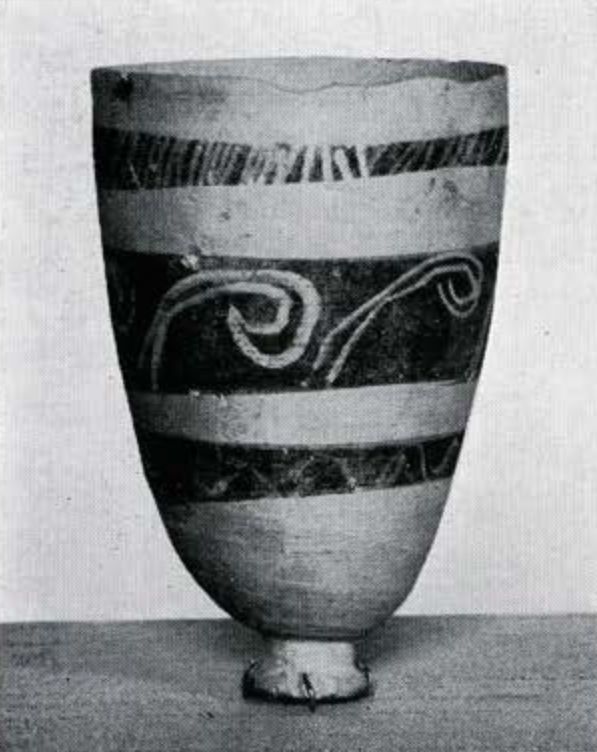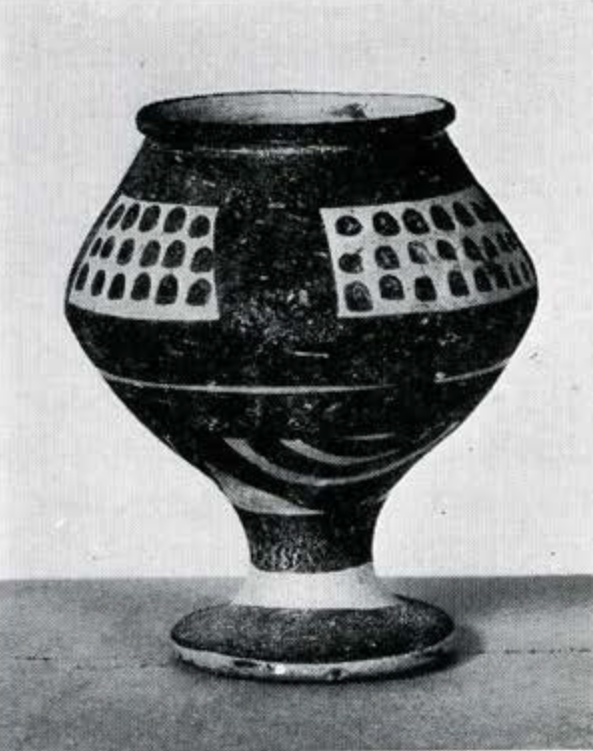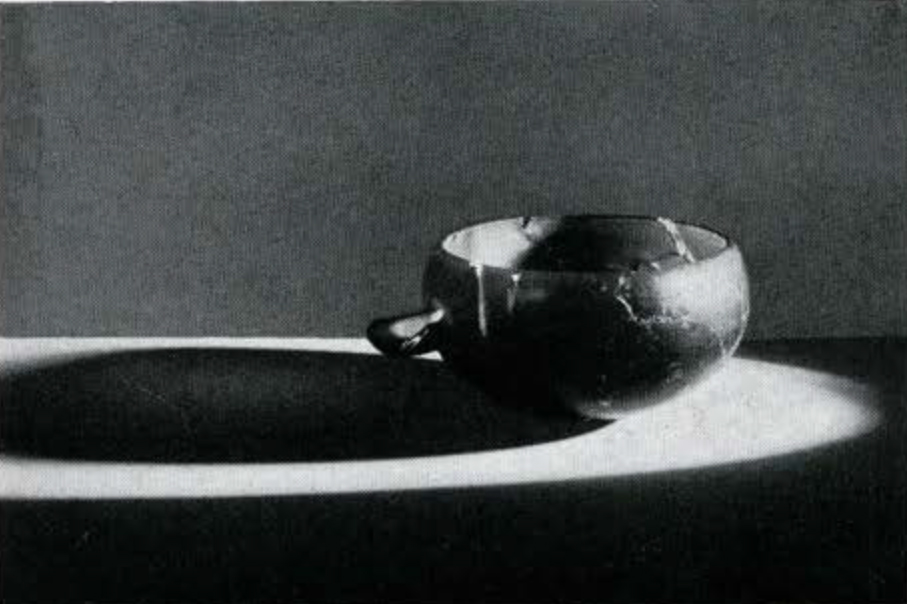The artificial mound of Tepe Gawra, fifteen miles east from Mosul, two miles from Khorsabad, covers a much older settlement. Its almost total absence of written documents is compensated by an abundance of pottery, painted and unpainted, which represents all the known periods – including some local ones – down to al-‘Ubaid, Tell Khalaf, and probably the neolithic period. Twenty levels – they may now reach twenty-four – were surveyed in 1927 by Professor E. A. Speiser, with the financial help of the American Schools of Oriental Research of Baghdad, Dropsie College and the Guggenheim Foundation. In 1930 the University Museum joined the group with an endowment from the Rockefeller Foundation. A second site, Tell Billa, eight miles east of Tepe Gawra, was added to the first, and excavations were carried on at both at the same time, Charles Bache being in charge at Tell Billa. A study of the Tell Billa pottery (Figure 45) in the Museum Journal, Vol. XXIII, no. 3, 1933, and the first volume of the Excavations at Tepe Gawra, Levels I to VIII, 1935 (Figure 46) have been published by Professor E. A. Speiser. After 1933, Charles Bache remained sole director in the field. At Tepe Gawra he carried the excavation down to level twenty. His untimely death has prevented the completion of his work and its publication-which is now entrusted to his devoted friend A. J. Tobler.

Museum Object Number: 32-20-400
Image Number: 46202

Museum Object Number: 31-52-319
Tepe Gawra was abandoned at the beginning of the second millennium B.C. Before reaching level VIII the abundance of copper and painted pottery shows that we have already reached the Jemdet-Nasr and Uruk periods. At level XIII, the architectural remains on the acropolis, three temples enclosing an open court, represent, according to Professor E. A. Speiser, the oldest civilization-social and religious-in the Near East, in the al-‘Ubaid phase. The red-purple painted walls and floors, the floral motive decoration, the pilasters and piers in front, the inner rooms and altars are curiously like those of the Red Temple at Tell ‘Uqair. At level XIV, the stone foundations of a large building are the earliest on record at Gawra. The al-‘Ubaid monochrome painted wares, of somewhat inferior quality, continue to level XIX. At level XV, rectangular courts, rooms, bins for storage of grain, kilns, fresco paintings are on record. But at level XVII circular buildings, the so-called tholoi, probably covered with a dome, heretofore known only in Khalaf levels, at the neighbouring site of Arpachiyah, near Nineveh, appear, together with some painted Samarra and Khalaf pottery and a new type of pottery vessel. This has a lenticular-shaped body with a high spout set obliquely on its shoulder; the painted decoration usually consists of solid colour, with reserved bands or panels. Fragments of similar vases have been found at al-‘Ubaid. Stratum XX marks the end of the Khalaf period with its thin, well-baked, beautifully decorated polychrome pottery. Examples of all types of painted pottery from Tepe Gawra and Tell Billa, including the chalices with their curious animal figures, may be seen in the Babylonian Section of the University Museum together with other finds of seals, beads, terracottas, copper and obsidian objects. The obsidian spouted bowl (Figure 47) is a rare and exquisite piece of the ancient stone-cutter’s craft.

Museum Object Number: 35-10-287

